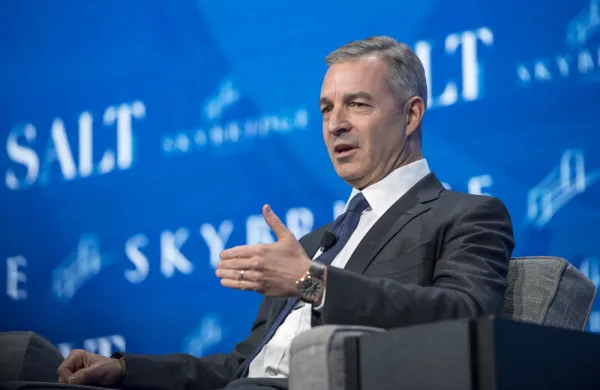As traditional defined benefit pensions more and more go the way of the dodo, it is surprising to learn that one type of defined benefit plan is gaining momentum, having tripled in size since 2006. Not only that, but the growth of these plans, known as cash balance plans, is primarily attributable to the small-to-midsize retirement plan market.
This observation is not so surprising, however, once one notes that cash balance plans have become an increasingly popular tax shelter for small-to-midsize business owners, especially those running medical, legal and dental practices. But who knew that an executive tax shelter could be so beneficial to the rank and file? For employees at small businesses, the advent of a new cash balance plan in addition to their existing 401(k) plan, another vehicle that draws from pretax income, is reason to celebrate. For registered investment advisers who want to expand their practice and offerings, new cash balance programs that are coming online are a potential way to gain new business.
A cash balance plan is a hybrid form of the defined benefit pension. Like other defined benefit plans, it specifies an employer contribution and an interest crediting rate, the official interest rate credited each year to the plan participant’s account, that is pooled and invested. But each participant has an individual account that is portable, like a 401(k), and can be rolled over into an IRA upon employment separation or retirement.
Increased clarity, regulatory guidance and higher tax rates have all conspired to make cash balance plans attractive to small-business owners. Although the first cash balance plan was introduced in 1985 at Bank of America, these plans didn’t gain real momentum in the small-plan market until after the promulgation of the Pension Protection Act of 2006, which provided guidance on their legality and administrative issues.
Higher tax rates have also been a big contributor to the nearly 20 percent annual growth in cash balance plans since 2001, according to Kravitz, an Encino, California–based actuarial firm that educates financial advisers on cash balance plans.
But tax advantages for business owners aside, these new plans have also boosted the retirement savings benefits for the rank and file. In fact, because of Internal Revenue Service nondiscrimination rules, companies more than double their contributions to employee retirement accounts when they add a cash balance plan to an existing 401(k) or profit-sharing plan, says Daniel Kravitz, president and son of firm founder Louis Kravitz.
Just like their larger corporate brethren, professional practices once offered traditional pension plans that paid out benefits according to years of work and final average pay. But as senior partners retired and junior partners who were left to fund the plans retired these liabilities, those plans were terminated. When 401(k) savings plans, the usual replacement for pensions, did not serve all the retirement needs of these executives, another option was sought.
“People found that if you wanted to get more money contributed, you had to have a defined benefit plan,” says Richard Shea, an ERISA attorney at Covington & Burling in Washington. “Defined contribution plans have more stringent contribution limits.” In fact, a 60-year-old business owner can shelter as much as $225,000 a year.
The basic construct and concept of cash balance plans are the same for large and small employers, says Kravitz. “The features are the same, but the benefits are different.” Ironically, it was the largest plans that began cash balance programs as substitutes for longtime traditional pensions. But in many cases it turned out that the introduction of a cash balance plan was just a step on the way to the total termination of pensions. For example, at United Technologies Corp. in Hartford, Connecticut, a cash balance plan was launched in 2003 when the final average-pay pension was closed. But the company closed the cash balance plan in 2010, with all new employees defaulting into the company savings plan.
Financial advisers and registered investment advisers have picked up on this burgeoning market. “We started out providing cash balance plans to $50 million plans like law firms,” explains Meghan Elwell, vice president of quantitative analysis and research at Sage Advisory Services, an $11 billion asset management firm in Austin, Texas. “There aren’t a lot of solutions targeted to them.”
Cash balance plans received a boost this September when the IRS and the Department of the Treasury issued guidance clarifying the investment options allowed in the plans, enabling mutual funds to be part of the investment array. Following that, Sage Advisory created Cash Balance Complete, a turnkey program for financial advisers in partnership with July Business Services, a provider of recordkeeping and third-party administration services in Waco, Texas. “Most advisers don’t understand the intricacies of cash balance plans,” says Elwell. According to Wade Behlen, director of retirement plans and foundations for Feltz WealthPLAN, an RIA in Omaha, Nebraska, and part of LPL Financial, the largest network of independent financial advisers in the U.S., this is because planners already tend to wear a lot of hats, handling such diverse segments as investments, insurance and retirement.
As growth of the 401(k) market has slowed, for now it looks as if cash balance plans will be carrying the weight of new pension benefits for at least some of the U.S. workforce. Financial advisers should take note.
Follow Frances Denmark on Twitter at @francesdenmark .
Get more on registered investment advisers and pensions .






